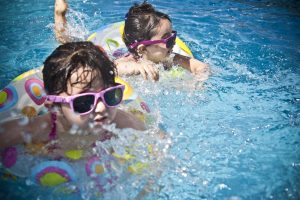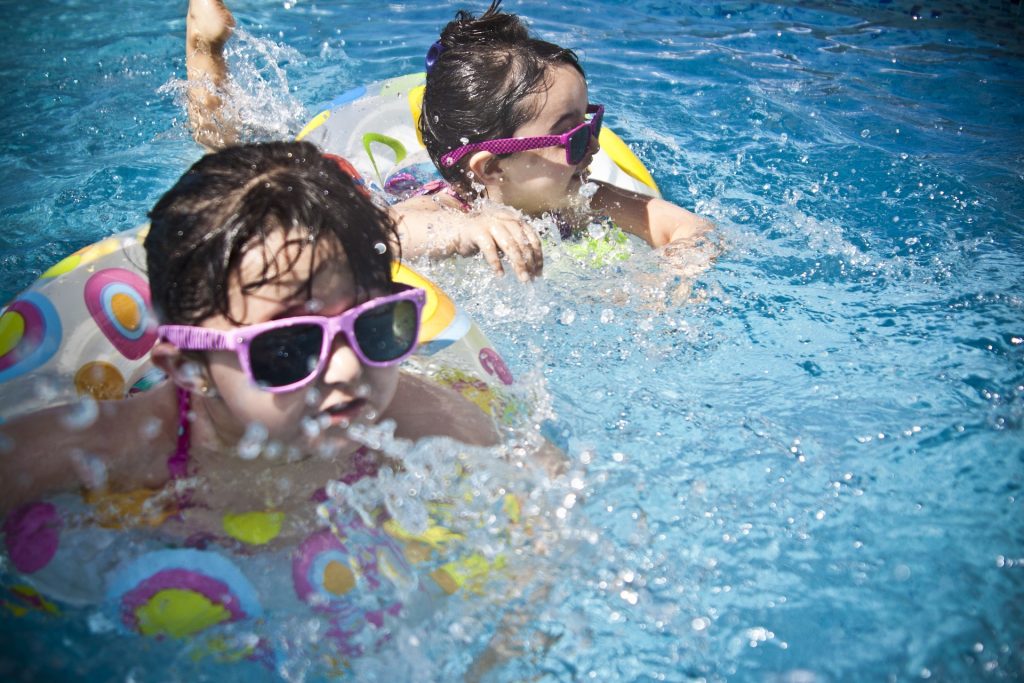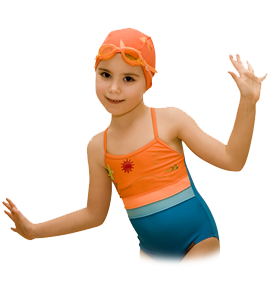
The American Academy of Pediatrics (AAP) recommends several ways parents can help keep children safe around home swimming pools and hot tubs―all year long―in your own backyard, your neighbor’s, or on vacation.
Fact: Most drownings in kids 4 and under happen in home swimming pools.
The U.S. Consumer Product Safety Commission (CPSC) studied drownings among children age 4 and under in Arizona, California, and Florida, where pools are especially common. It found that nearly 70% of the children were not expected to be at or in the pool, yet they were found in the water. In fact, 46% of the children were last seen in the house.

Between 2013 and 2015, most (58%) drownings among children age 4 and under took place in a pool or spa at their own home. Most children drowned when they wander out of the house and fell into a swimming pool that was not fenced off from the house. They slipped out a door, climbed out a window, or even crawled through a doggy door to access the pool.
But, a family swimming pool isn’t the only one a child can get into unnoticed. More than a quarter (27%) of drownings among children age 4 and under took place at the home of a friend, relative or neighbor. Only some individual states and municipalities have laws requiring pool safety fences; there is no national pool fence law. Whenever your child will be in someone else’s home, always check for ways your child could access pools and other potential hazards.
Pool fencing recommendations:
- 4 feet, 4 sides. The pool fence should be at least 4 feet high and completely surround the pool, separating it from the house and the rest of the yard.
- Climb-proof. The fence shouldn’t have any footholds, handholds, or objects such as lawn furniture or play equipment the child could use to climb over the fence. Chain-link fences are very easy to climb and are not recommended as pool fences. (If they are used, make sure openings are 1¾ inches or smaller in size).
- Slat space. To ensure a small child can’t squeeze through the fence, make sure vertical slats have no more than 4 inches of space between them. This will also help keep small pets safe, too.
- Latch height. The fence should have a self-closing and self-latching gate that only opens out, away from the pool area. The latch should be out of a child’s reach—at least 54 inches from the ground.
- Gate locked, toy-free. When the pool is not in use, make sure the gate is locked. Keep toys out of the pool area when it is not in use.
Drowning is silent. Alarms break that silence.
- Pool alarms. Children can drown within seconds, with barely a splash. Swimming pool alarms can detect waves on the water’s surface and sound off to attract attention when someone has fallen into the pool.
- Consider alarms on the pool fence gate and house doors. Door and gate alarms can be equipped with touchpads to let adults pass through without setting them off. House doors should be locked if a child could get to the pool through them.
- Window guards. These can be especially helpful for windows on the house that face the pool.
What Else Can Parents Do?
Even with safety measures in place, parents should be prepared in case that their child gets into a swimming pool unseen. Some precautions that may help:
- Life jackets: Put your child in a properly fitted US Coast Guard approved life jacket when around or near water, such as when visiting a home with a pool.
- Swim lessons. The AAP recommends swim lessons as a layer of protection against drowning that can begin for many children starting at age 1. Learn more here.
- CPR training. Parents, caregivers, and pool owners should know CPR and how to get emergency help. Keep equipment approved by the U.S. Coast Guard, such as life preservers and life jackets at poolside.
- Check the water first. If a child is missing, look for him or her in the pool or spa first. This is especially important if your child is prone to wandering.
- Spread the word. Share this article on social media and with family, friends, and neighbors
The information provided is for general interest only and should not be misconstrued as a diagnosis, prognosis or treatment recommendation. This information does not in any way constitute the practice of medicine, or any other health care profession. Readers are directed to consult their health care provider regarding their specific health situation. Marque Medical is not liable for any action taken by a reader based upon this information.


